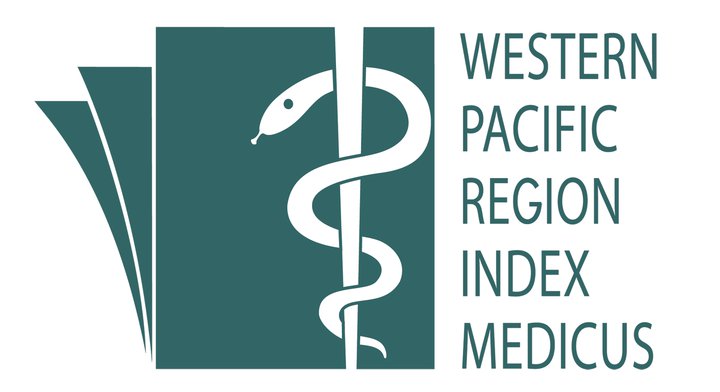Using Nominal Group Technique to develop COMBI-related health contents of a mobile application
Keywords:
COMBI, dengue, mobile application, mobile health, nominal group techniqueAbstract
Introduction:
The Communication for Behavioral Impact (COMBI) program functions as a platform for developing effective ways to prevent and control outbreaks in community settings that are technically sound and culturally acceptable, relevant, and feasible for communities to execute. This research aimed to systematically develop the health content for the mobile application using the nominal group technique (NGT) to improve the implementation of COMBI in preventing and controlling dengue in Malaysia.
Methods:
We assembled a group of individuals focusing on implementing the COMBI program and developing a mobile application. Using the NGT, a proven and structured method for conducting group meetings to reach a consensus, we agreed on the crucial contents to prioritise for developing a mobile application as the new approach to delivering the COMBI program. The panel met once via an online platform in November 2022, and the meeting lasted for two and a half hours.
Result:
14 participants participated in the expert panel. During the sharing ideas activity, the panel generated 22 items. The response rate for voting was 100%. After determining the acceptance of each item, the panel retained 20 items from the original list to establish the rank order. Only one round was needed for the panel to reach a consensus to accept all the final 20 items (distributed into 11 categories) as the content for the mobile app. The selected components agreed upon by the expert panel encompassing information on COMBI, essential facts about dengue including the pathogen, the vector (characteristics of Aedes mosquito and its potential breeding sites), and the symptoms and signs, information on preventive methods including search and destroy breeding sites, application of larvicide, and methods to prevent mosquito bites, dengue situation (daily cases and outbreak report), actions during dengue outbreak, law enforcement in dengue control, update on COMBI activities, reminder alert program for search and destroy activity, dengue monitoring for dengue patient, problem reporting system, as well as Uniform Resource Locator related to dengue. These can support communities by disseminating key messages regarding dengue and equipping them with enough motivation and skills to prevent dengue transmission at the community level.
Conclusion:
This is the first known consensus study to identify engaging mobile app content to improve the COMBI program's delivery and implementation using the NGT. We recommend the technique as an effective tool for designing interventions against communicable diseases.
References
WHO. Vector-borne Diseases. World Health Organization; 2020. Available from: https://www.who.int/news-room/fact-sheets/detail/vector-borne-diseases
WHO. Dengue and Severe Dengue. World Health Organization; 2023. Available from: https://www.who.int/news-room/fact-sheets/detail/dengue-and-severe-dengue
Shekhar KC, Huat OL. Epidemiology of dengue/dengue hemorrhagic fever in Malaysia-A retrospective epidemiological study. 1973-1987. Part II: Dengue fever (DF). Asia-Pacific J Public Heal. 1992;6(3):126–33. doi: 10.1177/101053959200600302
Abubakar S, Shafee N. Outlook of dengue in Malaysia: A century later. Malays J Pathol. 2002;24(1):23–7. PMID: 16329552
Mudin RN. Dengue incidence and the prevention and control program in Malaysia. Int Med J Malaysia. 2015;14(1):5–9. doi: 10.31436/imjm.v14i1.447
MOH. Health Facts 2020: Reference Data for year 2019. Ministry of Health Malaysia; 2020.
Abu Bakar S, Puteh SEW, Kastner R, Oliver L, Lim SH, Hanley R, et al. Epidemiology (2012-2019) and costs (2009-2019) of dengue in Malaysia: A systematic literature review. Int J Infect Dis. 2022; 124:240–7. doi: 10.1016/j.ijid.2022.09.006
Liew SM, Khoo EM, Ho BK, Lee YK, Omar M, Ayadurai V, et al. Dengue in Malaysia: Factors associated with dengue mortality from a national registry. PLoS One. 2016;11(6):e0157631. doi: 10.1371/journal.pone.0157631
MOH. National Dengue Prevention and Control Strategic Plan 2022-2026. Ministry of Health Malaysia; 2022.
Thomas SJ, Yoon IK. A review of Dengvaxia®: Development to deployment. Hum Vaccines Immunother. 2019;15(10):2295–314. doi: 10.1080/21645515.2019.1658503
Wilder-Smith A, Ooi EE, Horstick O, Wills B. Dengue. Lancet. 2019;393(10169):350–63. doi: 10.1016/S0140-6736(18)32560-1
Naing C, Ren WY, Man CY, Fern KP, Qiqi C, Ning CN, et al. Awareness of dengue and practice of dengue control among the semi-urban community: A cross sectional survey. J Community Health. 2011;36(6):1044–9. doi: 10.1007/s10900-011-9407-1
Packierisamy PR, Ng CW, Dahlui M, Inbaraj J, Balan VK, Halasa YA, et al. Cost of dengue vector control activities in Malaysia. Am J Trop Med Hyg. 2015;93(5):1020–7. doi: 10.4269/ajtmh.14-0667
Rather IA, Parray HA, Lone JB, Paek WK, Lim J, Bajpai VK, et al. Prevention and control strategies to counter dengue virus infection. Front Cell Infect Microbiol. 2017;7(336). doi: 10.3389/fcimb.2017.00336
Ahmad R, Suzilah I, Wan Najdah WMA, Topek O, Mustafakamal I, Lee HL. Factors determining dengue outbreak in Malaysia. PLoS One. 2018;13(2):e0193326. doi: 10.1371/journal.pone.0193326
Ong SQ. Dengue vector control in Malaysia: A review for current and alternative strategies. Sains Malaysiana. 2016;45(5):777–85.
Vythilingam I, Wan-Yusoff WS. Dengue vector control in Malaysia: Are we moving in the right direction? Trop Biomed. 2017;34(4):746–58. PMID: 33592944
Leong CS, Vythilingam I, Liew JW, Wong ML, Wan-Yusoff WS, Lau YL. Enzymatic and molecular characterization of insecticide resistance mechanisms in field populations of Aedes aegypti from Selangor, Malaysia. Parasites Vectors. 2019;12(1):236. doi: 10.1186/s13071-019-3472-1
Rasli R, Cheong YL, Che Ibrahim MK, Farahininajua Fikri SF, Norzali RN, Nazarudin NA, et al. Insecticide resistance in dengue vectors from hotspots in Selangor, Malaysia. PLoS Negl Trop Dis. 2021;15(3): e0009205. doi: 10.1371/journal.pntd.0009205
Liverani M, Charlwood JD, Lawford H, Yeung S. Field assessment of a novel spatial repellent for malaria control: A feasibility and acceptability study in Mondulkiri, Cambodia. Malar J. 2017;16(412). doi: 10.1186/s12936-017-2059-6
Wai KT, Htun PT, Oo T, Myint H, Lin Z, Kroeger A, et al. Community-centred eco-bio-social approach to control dengue vectors: An intervention study from Myanmar. Pathog Glob Health. 2012;106(8):461–8. doi: 10.1179/2047773212Y.0000000057
Toledo ME, Vanlerberghe V, Baly A, Ceballos E, Valdes L, Searret M, et al. Towards active community participation in dengue vector control: results from action research in Santiago de Cuba, Cuba. Trans R Soc Trop Med Hyg. 2007;101(1):56–63. doi: 10.1016/j.trstmh.2006.03.006
Vanlerberghe V, Toledo ME, Rodríguez M, Gomez D, Baly A, Benitez JR, et al. Community involvement in dengue vector control: Cluster randomised trial. BMJ. 2009;338:b1959. doi: 10.1136/bmj.b1959
WHO. Communication for Behavioural Impact (COMBI): A toolkit for behavioural and social communication in outbreak response. Geneva: WHO Press; 2012.
Suhaili MR, Hosein E, Mokhtar Z, Ali N, Palmer K, Isa MM. Applying Communication-for-Behavioural-Impact (COMBI) in the Prevention and Control of Dengue in Johor Bahru, Johor, Malaysia. Dengue Bull. 2004;28(SUPPL.):39–43.
MOH. COMBI Information. Ministry of Health Malaysia. 2023. Available from: https://www.infosihat.gov.my/program-utama/combis/maklumat-combi.html
MOH. COMBI Community Guideline: Social Mobilization and Communication Strategies for Dengue Prevention and Control. Health Education Division, Ministry of Health Malaysia; 2016.
Rozhan S, Jamsiah M, Rahimah A, Ang K. The COMBI (Communication for Behavioral Impact) in the prevention and control of dengue-The Hulu Langat experience. J Community Health. 2006;12(1):19–32.
Hod R, Othman H, Jemain NA, Sahani M, Udin K, Ali ZM, et al. The COMBI approach in managing dengue cases in an urban residential area, Nilai, Malaysia. Int J Public Heal Res. 2013;3(2):347–52.
Ismail A, Nawi AM, Mohamed A. Communication for behavioural impact (COMBI) program in dengue prevention evaluation: Mixed methods approach. Int Med J. 2015;22(5):367–70.
Suraiya S, Zaman S, Shahnaz M, Faizal B, Asiah M. COMBI approach as community-based intervention in dengue control through leadership. Br J Educ Soc Behav Sci. 2016;13(3):1–8.
IPH. National Health & Morbidity Survey (NHMS) 2020: Communicable Diseases. Cognitive, Attitude and Behaviour (Volume II). Institute for Public Health Malaysia; 2021.
Rahim MH, Dom NC, Ismail SNS, Mulud ZA, Abdullah S, Pradhan B. The impact of novel coronavirus (2019-nCoV) pandemic movement control order (MCO) on dengue cases in Peninsular Malaysia. One Heal. 2021;12:100222. doi: 10.1016/j.onehlt.2021.100222
Patrick K, Griswold WG, Raab F, Intille SS. Health and the mobile phone. Am J Prev Med. 2008;35(2):177–81. doi: 10.1016/j.amepre.2008.05.001
Carrillo MA, Kroeger A, Cardenas Sanchez R, Diaz Monsalve S, Runge-Ranzinger S. The use of mobile phones for the prevention and control of arboviral diseases: A scoping review. BMC Public Health. 2021;21(1):110. doi: 10.1186/s12889-020-10126-4
Weinstein RS, Lopez AM, Joseph BA, Erps KA, Holcomb M, Barker GP, et al. Telemedicine, telehealth, and mobile health applications that work: Opportunities and barriers. Am J Med. 2014;127(3):183–7. doi: 10.1016/j.amjmed.2013.09.032
BinDhim NF, McGeechan K, Trevena L. Smartphone Smoking Cessation Application (SSC App) trial: A multicountry double-blind automated randomised controlled trial of a smoking cessation decision-aid ‘app’. BMJ Open. 2018;8(1):e017105. doi: 10.1136/bmjopen-2017-017105
Hoeppner BB, Schick MR, Kelly LM, Hoeppner SS, Bergman B, Kelly JF. There is an app for that – Or is there? A content analysis of publicly available smartphone apps for managing alcohol use. J Subst Abuse Treat. 2017;82:67–73. doi: 10.1016/j.jsat.2017.09.006
Crane D, Garnett C, Brown J, West R, Michie S. Behavior change techniques in popular alcohol reduction apps: Content analysis. J Med Internet Res. 2015;17(5): e118. doi: 10.2196/jmir.4060
Bondaronek P, Alkhaldi G, Slee A, Hamilton FL, Murray E. Quality of publicly available physical activity apps: review and content analysis. JMIR Mhealth Uhealth. 2018;6(3):e53. doi: 10.2196/mhealth.9069
Søndergaard E, Ertmann RK, Reventlow S, Lykke K. Using a modified nominal group technique to develop general practice. BMC Fam Pract. 2018;19(1):117. doi: 10.1186/s12875-018-0811-9
Jones J, Hunter D. Consensus methods for medical and health services research. BMJ. 1995;311(7001):376–80. doi: 10.1136/bmj.311.7001.376
Campbell SM, Braspenning J, Hutchinson A, Marshall MN. Research methods used in developing and applying quality indicators in primary care. BMJ. 2003;326(7393):816–9. doi: 10.1136/bmj.326.7393.816
Van de Ven AH, Delbecq AL. The nominal group as a research instrument for exploratory health studies. Am J Public Health. 1972;62(3):337–42. doi: 10.2105/ajph.62.3.337
Fink A, Kosecoff J, Chassin M, Brook RH. Consensus methods: characteristics and guidelines for use. Am J Public Health. 1984;74(9):979–83. doi: 10.2105/ajph.74.9.979
Abas SA, Ismail N, Zakaria Y, Ismail I, Zain NHM, Yasin SM, et al. A Gamified Real-time Video Observed Therapies (GRVOTS) mobile app via the modified nominal group technique: development and validation study. JMIR Serious Games. 2023;11:e43047. doi: 10.2196/43047
Palacios-Gálvez MS, Andrés-Villas M, Vélez-Toral M, Merino-Godoy Á. Nominal groups to develop a mobile application on healthy habits. Healthcare (Basel). 2021;9(4):378. doi: 10.3390/healthcare9040378
Rosa AF, Martins AI, Cerqueira M, Santos M, Silva AG, Rocha NP. Applying the nominal group technique for the conceptual validation of e-health solutions. Procedia Comput Sci. 2023; 219:1240–8. doi: 10.1016/j.procs.2023.01.407
McMillan SS, King M, Tully MP. How to use the nominal group and Delphi techniques. Int J Clin Pharm. 2016;38(3):655–62. doi: 10.1007/s11096-016-0257-x
Humphrey-Murto S, Varpio L, Gonsalves C, Wood TJ. Using consensus group methods such as Delphi and Nominal Group in medical education research. Med Teach. 2017;39(1):14–9. doi: 10.1080/0142159X.2017.1245856
Cooper S, Cant R, Luders E, Waters D, Henderson A, Hood K, et al. The Nominal Group Technique: Generating consensus in nursing research. J Nurs Educ. 2020;59(2):65–7. doi: 10.3928/01484834-20200122-02
Maguire T, Garvey L, Ryan J, Olasoji M, Willets G. Using the Nominal Group Technique to determine a nursing framework for a forensic mental health service: A discussion paper. Int J Ment Health Nurs. 2022;31(4):1030–8. doi: 10.1111/inm.13023
Zamzuri MAIA, Abd Majid FN, Dapari R, Hassan MR, Isa AMM. Perceived risk for dengue infection mediates the relationship between attitude and practice for dengue prevention: A study in Seremban, Malaysia. Int J Environ Res Public Health. 2022;19(20):13252. doi: 10.3390/ijerph192013252
Zamzuri MAIA, Jamhari MN, Faisal Ghazi H, Muhamad Hasani MH, Mohd Ali NK, Abd Rashid MF, et al. A unique double tango: Construct validation and reliability analysis of risk perception, attitude and practice (RPAP) questionnaire on dengue infection. PLoS One. 2021;16(8):e0256636. doi: 10.1371/journal.pone.0256636
Hassan MR, Azit NA, Fadzil SM, Ghani SRA, Ahmad N, Nawi AM. Insecticide resistance of Dengue vectors in South East Asia: A systematic review. Afr Health Sci. 2021;21(3):1124–40. doi: 10.4314/ahs.v21i3.21
Zaini ZI, Othman H, Karim N, Abd Rashid NA, Hisham Abas MB, Sahani M, et al. Knowledge and practices regarding Aedes control amongst residents of dengue hotspot areas in Selangor: A cross-sectional study. Sains Malaysiana. 2019;48(4):841–9. doi: 10.17576/jsm-2019-4804-16
Deslandes SF, Mendes CHF, Pires T de O, Campos D de S. Use of the Nominal Group Technique and the Delphi Method to draw up evaluation indicators for strategies to deal with violence against children and adolescents in Brazil. Rev Bras Saude Matern Infant. 2010;10(SUPPL. 1):29–37. doi: 10.1590/S1519-38292010000500003
Harvey N, Holmes CA. Nominal group technique: An effective method for obtaining group consensus. Int J Nurs Pract. 2012;18(2):188–94. doi: 10.1111/j.1440-172X.2012.02017.x
Potter M, Gordon S, Hamer P. The Nominal Group Technique: A useful consensus methodology in physiotherapy research. New Zeal J Physiother. 2004;32(3):126–30.
Cunningham S. Evaluating a nursing erasmus exchange experience: Reflections on the use and value of the Nominal Group Technique for evaluation. Nurse Educ Pract. 2017;26:68–73. doi: 10.1016/j.nepr.2017.07.002
Isa A, Loke YK, Smith JR, Papageorgiou A, Hunter PR. Mediational effects of self-efficacy dimensions in the relationship between knowledge of dengue and dengue preventive behaviour with respect to control of dengue outbreaks: A structural equation model of a cross-sectional survey. PLoS Negl Trop Dis. 2013;7(9): e2401. doi: 10.1371/journal.pntd.0002401
Hairi F, Ong CH, Suhaimi A, Tsung TW, bin Anis Ahmad MA, Sundaraj C, et al. A knowledge, attitude and practices (KAP) study on dengue among selected rural communities in the Kuala Kangsar district. Asia Pac J Public Health. 2003;15(1):37–43. doi: 10.1177/101053950301500107
Tsourtos G, Foley K, Ward P, Miller E, Wilson C, Barton C, et al. Using a nominal group technique to approach consensus on a resilience intervention for smoking cessation in a lower socioeconomic population. BMC Public Health. 2019;19(1):1577. doi: 10.1186/s12889-019-7939-y
Downloads
Published
How to Cite
Issue
Section
License
Copyright (c) 2024 Ahmad Farid Nazmi Abdul Halim, Rozita Hod, Khaironi Yatim Sharif, Noor Khalili Mohd Ali, Mohd Nazrin Jamhari, Muhamad Luqman Mahamad Zakaria, Rahmat Dapari, Syed Sharizman Syed Abdul Rahim, Shahrul Azhar Md Hanif, Mohd Firdaus Mohd Radi, Mohd ‘Ammar Ihsan Ahmad Zamzuri, Qistina Mohd Ghazali, Mohd Rohaizat Hassan

This work is licensed under a Creative Commons Attribution-NonCommercial 4.0 International License.
IJPHR applies the Creative Commons Attribution (CC BY) license to articles and other works we publish. If you submit your paper for publication by IJPHR, you agree to have the CC BY license applied to your work. Under this Open Access license, you as the author agree that anyone can reuse your article in whole or part for any purpose, for free, even for commercial purposes. Anyone may copy, distribute, or reuse the content as long as the author and original source are properly cited. This facilitates freedom in re-use and also ensures that IJPHR content can be mined without barriers for the needs of research.





